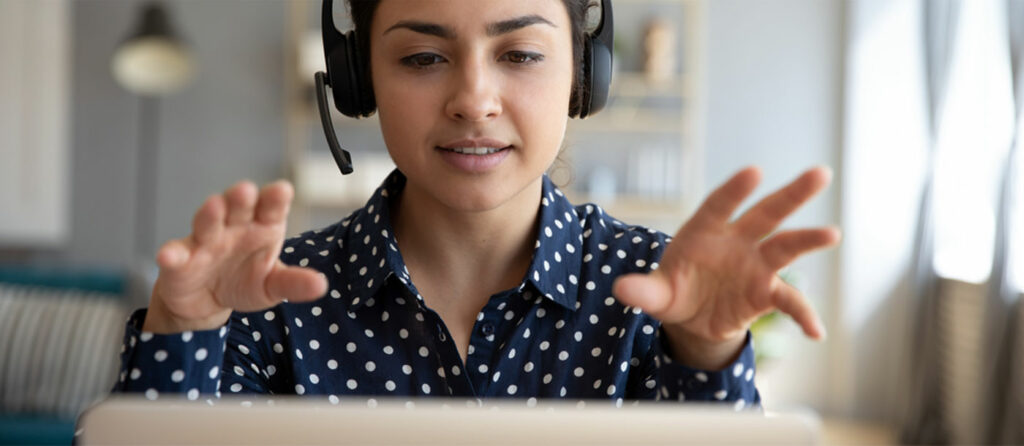By: Devika Dibya Choudhuri, Ph.D.
In the current pandemic, conducting tele mental health sessions has been the only way that we can ensure our clients’ and own safety. I will admit I never gave it much serious thought, particularly since I work with trauma and couldn’t imagine doing that intense work remotely. However, as needs must, I adapted and found myself learning a whole new medium that has ended up being astonishingly effective. As I share some of the lessons I have learned, please keep in mind that I am primarily discussing synchronous videoconferencing using online practice tools like Google Meet, Zoom or Doxy.me.
One must admit, the access and commitment clients have is amazing when they don’t have to travel. They are there early or right on time to enter. The weather is not a barrier except as small talk. I much prefer the lack of acrimony I feel when a client cancels and I haven’t had to juggle a schedule to adjust—instead, I breathe in delight that I have a free moment and promptly get busy doing something else. I also find clients to be much more comfortable in their spaces then in what they intuitively know as the therapist space. And of course, they are being physically distant and taking care of themselves.

10 guidelines for groupwork online:
- Group telemental health disclosures and consents need to be thought about carefully and clients need to sign and return to you prior to the session.
- Technology can and does fail, so always have backup procedures in place such as phone numbers to call.
- Prepare members for intentionally creating the space from which they connect. It must be a safe space that is private, and they must have the equipment they need—computer with webcam or a smartphone, but headphones are necessary particularly for virtual group.
- Videoconferencing is exhausting differently because you are straining your visual and auditory senses as your only sources of information about member reactions and responses, while underutilizing your other senses. So, build in breaks accordingly and have shorter sessions.
- Encourage people to use the resources they have access to such as pets, comfortable couches, beds, or blankets in their spaces to self-soothe without checking out. The only reason to shut off video is if they need to do something personally private or have an emergency where they must leave temporarily. A short note on the communal chat feature informs folks of the reason. Have people be present on video unless they have to turn it off for a personal private reason. Video off is essentially like leaving the group for other members. On the other hand, muting oneself is great. Make sure that people can’t chat privately otherwise you will have cross conversations boiling.
- When you open, you want to welcome member presence. Have some ritual activity of connection where people can “breathe together” even if they are in different locations. Find ways of keeping people active, even if it is by writing notes to themselves about the themes of the group.
- Each person must get structured chances to speak and you may need to call on people in turn. Since there isn’t a seating order that stays constant in a gallery view, people are often uncertain if they can speak as they don’t have a “order’ in which to do so.
- Have more activities that engage everyone. Have breakouts into smaller triads or even dyads more frequently than you might in a in-person group. I have also found that my preference is to have the upper limit on virtual groups be 12 members because that is the most people I can easily see on my screen in gallery view at one time.
- Teach people connecting, grounding, and mindful exercises to help them within and without the group to contain emotional reactivity, soothe distress, and center themselves in cases of instability. Do the exercises together during group to build connection.
- Use neuroscience to inform the work you do. Just because people are not physically with you, does not mean their bodies are absent. Their stressors, struggles, and affect are held in the body, and can be released in the body through your guidance. Embodied self and other awareness is still at work.
